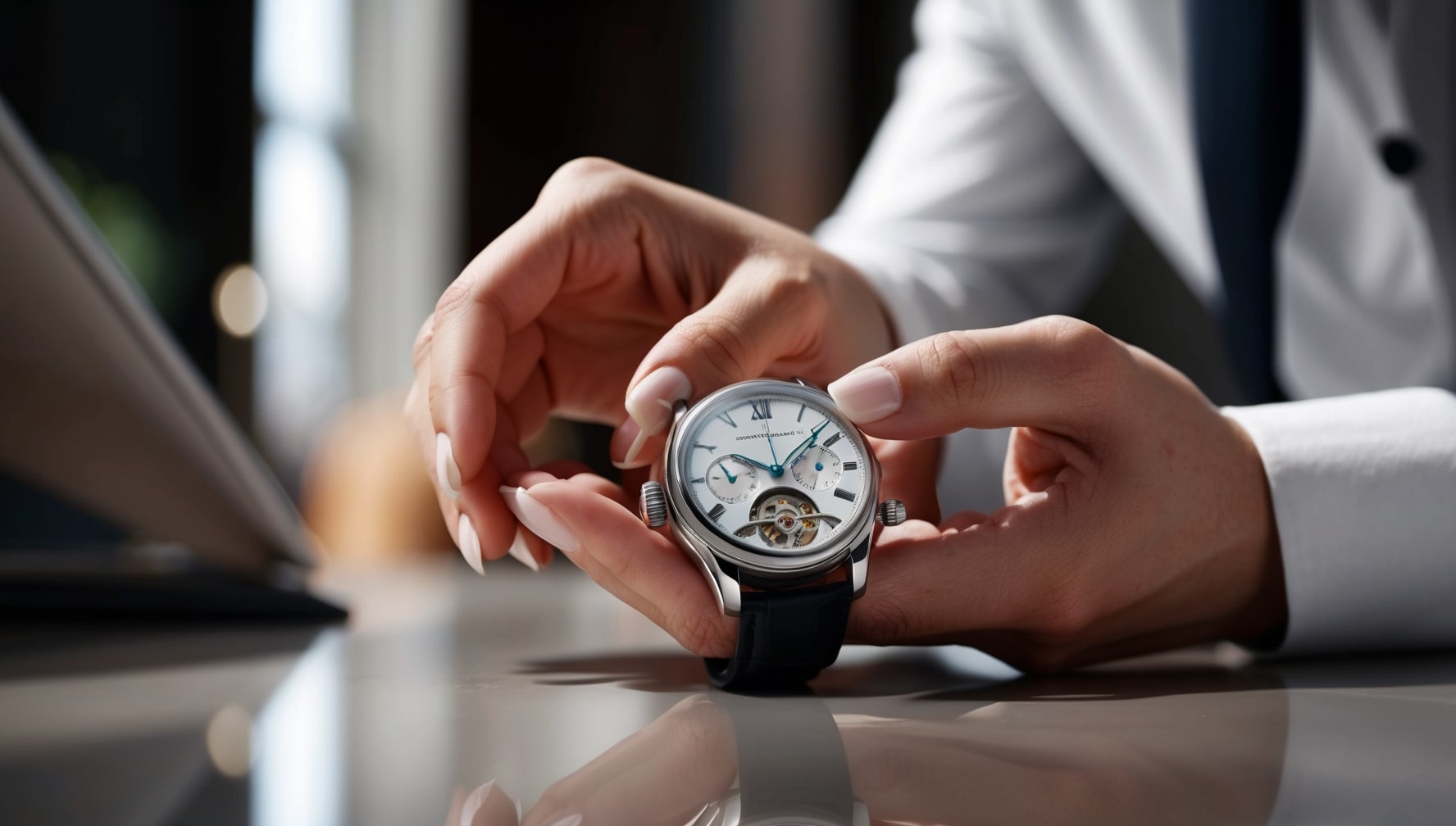
What Magnetism Does to Your Watch (and Why You Don't See It Coming)
It leaves no trace. No scratches, no dents. Nothing visible. And yet, magnetism is one of the quietest enemies of your automatic watch. ...



Are you the proud owner of an automatic watch ? Then this article could save your precious jewel! Let's dive together into the mysteries of the "death zone" of watches, a fascinating but potentially dangerous phenomenon for your timepiece. Discover how to protect your watch and avoid costly repairs.
The death zone of a mechanical watch refers to a specific time period during which it is risky to manipulate certain functions of your watch, including setting the date. This critical period is usually between 9:00 p.m. and 3:00 a.m.

But why do we talk about the "death zone"? No, your luxury watch is not going to suddenly implode at midnight! However, careless handling during this period can cause significant damage to the mechanism of your precious watch.
Imagine this scenario: It’s 11:30 pm, you’re about to go to sleep and you realize that the date on your watch is out of date. You instinctively turn the crown to adjust the date. Fatal mistake! Here’s what’s happening inside your watch:
The reason for this danger lies in the very design of mechanical watches . The date change is not instantaneous, contrary to what one might think. On an ETA 2824-2 movement, for example, which is very widespread in the watch industry, the date change process lasts about 2 hours .

During this period, multiple gears and springs work together to advance the date disc one notch. Interrupting this mechanical ballet can have disastrous consequences.
Here are some statistics that illustrate the importance of this phenomenon:
Fortunately, there are simple ways to keep your precious watch safe from the dangers of the death zone:
To ensure optimal protection of your watch, why not invest in an automatic watch winder ? Use the code BLOG10 to benefit from a 10% discount on your purchase at Rotation Horlogère!
Watch manufacturers have not ignored this problem. Since the introduction of the first movement with death zone protection by Rolex in 1988 (the Caliber 3135), the watch industry has made considerable progress.
| Characteristic | Antique Watches | Modern Watches |
|---|---|---|
| Death Zone Protection | Rare | 60-70% of models |
| Duration of date change | 2-3 hours | Often < 1 hour |
| Risk of damage | Pupil | Significantly reduced |
| Cost of repairs | Potentially high | Less frequent |
This development reflects the importance that watchmakers place on the reliability and longevity of their creations. Nevertheless, even the most sophisticated watches deserve careful care from their owner.
The "death zone" of mechanical watches remains a fascinating subject that illustrates the complexity and delicacy of these little masterpieces that we wear on our wrists. By understanding this phenomenon and adopting the right reflexes, you can fully enjoy your watch for many years to come.
Remember: a well-maintained watch is more than just an accessory, it is a legacy that you will pass on to future generations. Take care of it, and it will repay you a hundredfold!
To protect your precious watch, discover our selection of elegant and functional leather watch boxes . Use the code BLOG10 to benefit from 10% off your order!
Q1: Is my quartz watch affected by the death zone? A: No, the death zone only affects mechanical watches. Quartz watches use an electronic system for date change which is not affected by this phenomenon.
Q2: How do I know if my watch has a protection system? A: Check your watch manual or ask the manufacturer. High-end watches and recent models are more likely to have such systems.
Q3: What should I do if I accidentally tamper with my watch during the Death Zone? A: If you do not notice any immediate malfunction, continue to observe your watch. At the slightest sign of a problem (date not changing properly, unusual noises), consult a professional watchmaker.
Q4: Does the death zone affect the accuracy of my watch? A: The death zone does not directly affect the accuracy of the movement. However, damage to the date mechanism could indirectly impact the performance of your watch.
Q5: Are there any watches that are completely immune to this problem? A: Although many modern watches are equipped with protection systems, it is always recommended to follow good adjustment practices to preserve the longevity of your timepiece.
For watch enthusiasts looking to protect their collection, check out our stylish and durable wooden watch boxes . Don’t forget to use the code BLOG10 to enjoy 10% off your purchase at Rotation Horlogère!

It leaves no trace. No scratches, no dents. Nothing visible. And yet, magnetism is one of the quietest enemies of your automatic watch. ...

The world of watch boxes offers a multitude of options to meet various needs and preferences. From a simple storage box to...

An automatic watch lives even when it's not being worn. Its movement, its memory, its mechanics—all...
1 comment
Hello sir. I’m new to mechanical watche and still learning about the death zone.
Can you please explain to me more clearly, step by step, on how to do the safety method like you mentioned above. Thanks in advance.
“Use the safety method : Advance the hands until the date changes, then move them back to 6:00 p.m. before adjusting the date.”
https://rotation-horlogere.com/en/blogs/montre/zone-mort-montres-protection?srsltid=AfmBOorviC5heeja5DkTDJsEZ2OPgNO6uP1dWMDicGfuqFuIITcHqvfe
Ivan Ferdinand
Leave a comment
This site is protected by hCaptcha and the hCaptcha Privacy Policy and Terms of Service apply.